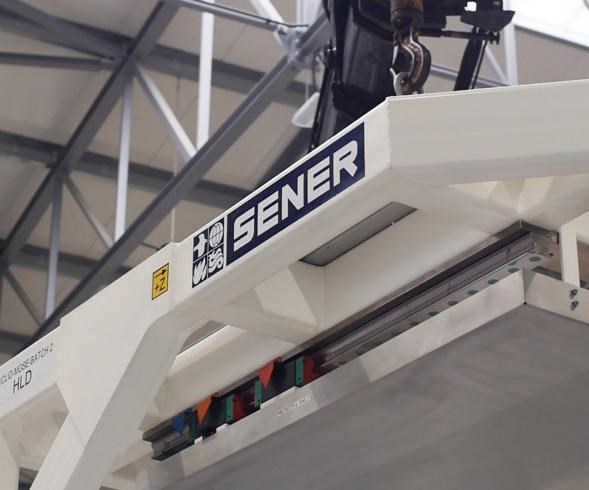Sener Aeroespacial to develop assembly, testing equipment for JUICE satellite solar array wings
The Spanish aerospace systems supplier will provide equipment for transport, functional and vibration tests and final assembly of the large solar panels.

Sener support stand from a previous space mission. Source | Sener Aeroespacial
Aerospace systems supplier Sener Aeroespacial (Madrid, Spain) announces that it will design and manufacture a set of mechanical ground support equipment for assembly and testing of solar array wings for the JUpiter ICy moons Explorer (JUICE) satellite, one of the largest missions of the European Space Agency (ESA).
JUICE is the first large mission of the ESA’s Space Vision 2015-2025 program, with the purpose of studying the atmosphere and magnetosphere of Jupiter and its moons Europe, Callisto and Ganymede. The satellite will be equipped with 97-square-meter solar panels, reportedly the largest used in a mission of this kind to date.
Sener Aeroespacial will provide equipment for transport around the facility, functional and vibration tests and final assembly of the large solar panels. The company is responsible for the design and manufacturing of a support frame (mechanism for elevation, leveling, rotation and transport of solar panels with a vibration adapter) and supervision over the manufacturing of four types of devices designed by the client, Airbus Defense and Space (Leiden, Netherlands). (Airborne (The Hague, Netherlands) is developing the substrate panels for use in the solar arrays.)
This contract is in addition to Sener Aeroespacial’s role in designing, manufacturing, testing and installing a 10-meter magnetometer boom used to place scientific instruments away from the satellite to avoid magnetic interference. Moreover, Sener Aeroespacial executes the Medium-Gain Antenna (MGAMA) that will back up the satellite’s High-Gain Antenna in order to guarantee communication between JUICE and the Earth all times. The medium-gain antenna will be also used in mission’s science experiments. Sener Aeroespacial’s work comprises the antenna reflector, the pointing mechanism and the control electronics.
The JUICE mission is scheduled to begin in mid-2022.
Related Content
-
Low-cost, efficient CFRP anisogrid lattice structures
CIRA uses patented parallel winding, dry fiber, silicone tooling and resin infusion to cut labor for lightweight, heavily loaded space applications.
-
A new era for ceramic matrix composites
CMC is expanding, with new fiber production in Europe, faster processes and higher temperature materials enabling applications for industry, hypersonics and New Space.
-
Orbital Composites wins award from U.S. Space Force to build space factories for antennas
Partners Axiom Space, Northrop Grumman Space Logistics and Southwest Research Institute will help advance ISAM technologies for kilometer-scale LEO antennas, space stations and GEO applications, targeting space factory in 3-5 years.

.jpg;width=70;height=70;mode=crop)








.jpg;maxWidth=300;quality=90)




